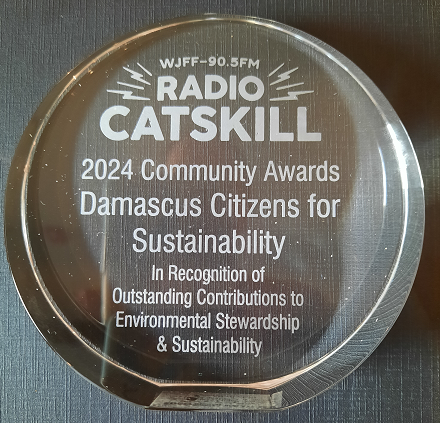Statoil to Move Marcellus Gas to Canada
May 6, 2010Proposed legislation would benefit landowners forced into drilling units
May 11, 2010The Campaign Contributions & Lobbying Expenditures of the Natural Gas Industry in Pennsylvania
Introduction
Pennsylvania has often been described as the “Wild West” of campaign financing. Ours is one of only eleven states that do not limit campaign contributions, and the state’s online campaign contribution database is not fully searchable or sortable, so that a search for contributions from a particular interest that might take minutes in another state could take hundreds of hours in Pennsylvania. As a result of these two failures—failure to limit campaign contributions, and failure to make this information truly accessible—big political donors wield extraordinary influence over the political process in Pennsylvania, even as they face relatively little scrutiny as compared to many other states.
The Natural Gas Boom
The natural gas industry gave $2.85 million to political candidates in Pennsylvania between 2001 and March 2010, and it spent $4.2 million on lobbying since Pennsylvania began requiring lobbyist reporting in 2007.1 Spending in both categories has spiked since 2008 as new drilling techniques have enabled the industry to more fully exploit the Marcellus Shale (See chart on p.5). This spike also comes as the industry is seeking to defeat a proposed severance tax on natural gas extraction, defeat a moratorium on drilling in state-owned lands, defeat or delay tougher environmental regulations, and keep information about exactly what mixtures of chemicals are used in natural gas extraction secret. With enough natural gas to fuel domestic demand for at least 10 years—and a current market value estimated at more than $1 trillion—the Marcellus Shale has enabled the industry to promise a modern-day Gold Rush for the state.
This study tracks the extent of the industry’s giving to elected officials and its success in rapidly expanding operations in the state before the potential for environmental damage from drilling has been fully studied. Pennsylvania and New York are the only major natural gas producing state that does not tax the extraction of this finite natural resource. Revenues from the severance taxes levied in other states are used to fund environmental protection, infrastructure repair, and proper regulation of drilling. On the lack of a severance tax in Pennsylvania, Department of Conservation and Natural Resources Secretary John Quigley recently said, “Quite frankly, the citizens of this state are being played for chumps.”2 Or as a spokesman for Chesapeake Energy, which has 519 well permits in Pennsylvania, told a reporter in 2009, “We gladly pay a severance tax in every state where we’re active, except in New York and Pennsylvania.”3
A modern-day Gold Rush in a state with “Wild West” campaign finance laws is a potentially dangerous combination. Without a severance tax, how will Pennsylvania pay to mitigate environmental damage, maintain and expand local infrastructure, and cover other costs that result from drilling? And without further study of the environmental consequences of hydraulic fracturing for the state’s water supply, and the possible risks to human health, how can we know how great this cost will be?
Bonanza of Lobbying & Campaign Contributions
Below is a summary of this study’s key findings.
- Drillers have a clear favorite in the 2010 gubernatorial race—Republican Tom Corbett, recipient of $361,207, with 93% of these contributions coming since January 2008. Among the candidates on the Democratic side, Dan Onorato was the top recipient with $59,300, followed by Jack Wagner with $44,550. Joe Hoeffel received a single contribution of $2,000 from the industry in 2004 while running for the U.S. Senate, but has received nothing since. Democratic candidate State Sen. Anthony Williams received no contributions from the industry, as did Republican candidate State Rep. Sam Rohrer.
- The biggest single donor by far was S.W. Jack Drilling with $1 million in contributions—an amount that comprises more than a third of the industry total of $2.85 million over the last ten years. Of S.W. Jack Drilling’s total, $990,000 came from CEO Christine Toretti.
- Gov. Ed Rendell was number six on the list of top recipients with $84,100. Rendell has been a leading proponent of a severance tax, but has also called himself the industry’s “best ally.”
- Among recipients that could identified as belonging to one of the two major parties, 84% of industry contributions went to candidates and committees that could be identified as Republican ($2.28 million), while 16% went to candidates and committees that could be identified as Democratic ($428,000).
- The industry’s annual lobbying expenditures have roughly tripled in the last three years, from $579,000 in 2007 to $1,685,000 in 2009. And from the last quarter of 2009 to the first quarter of 2010, lobbying expenditures rose from $421,000 to $716,000.
- Several of the contributors identified in this study have given to multiple candidates in the 2010 governor’s race. For example, on 12/16/09, Consol Energy CEO J. Brett Harvey gave $5,000 to Tom Corbett, then gave $5,000 to Dan Onorato on 12/23/09. From 2009-10, the Range Resources PAC gave $16,416 to Tom Corbett, $5,000 to Jack Wagner, and $5,000 to Dan Onorato.
- The 33 Nay votes in the House’s recent passage of a drilling moratorium on state-owned land took on average 3.4 times as much money from the industry ($162,400



